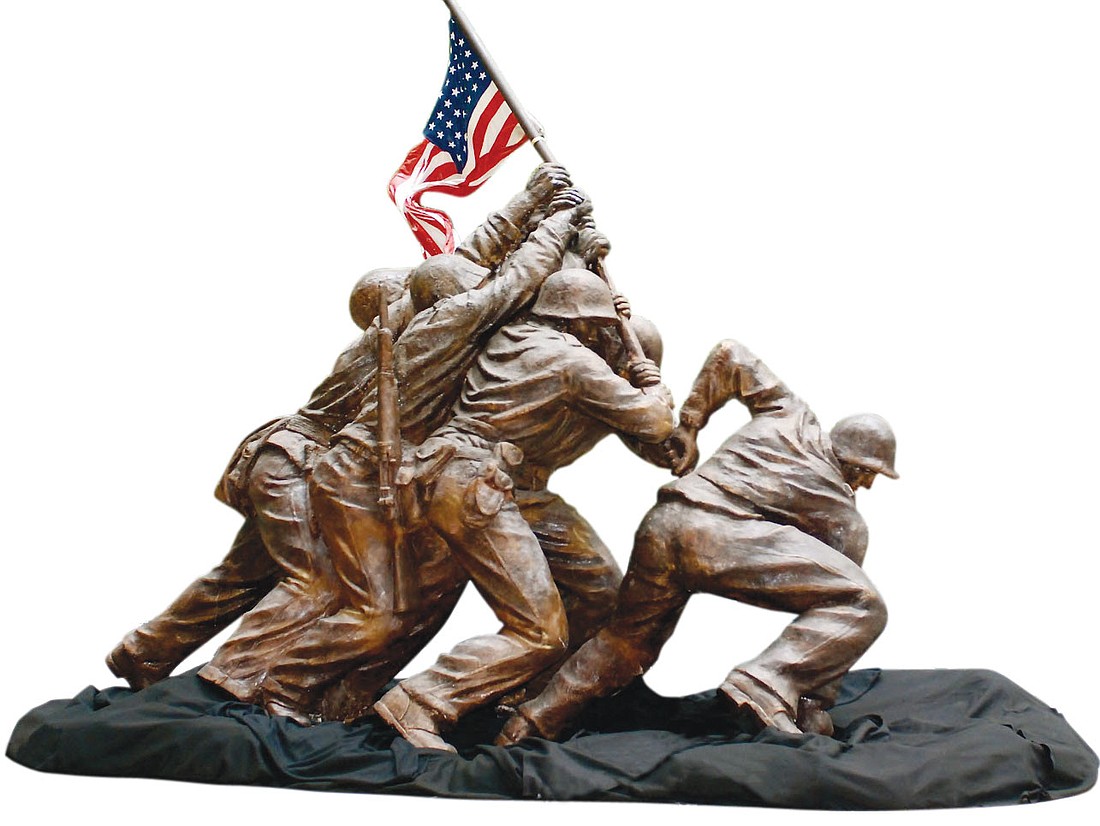- April 25, 2024
-
-
Loading

Loading

On Monday night, city commissioners expressed concern about fast-tracking the installation of an Iwo Jima monument along the bayfront. As a result, the donation application for the statue was withdrawn.
During Monday’s meeting, Commissioner Susan Chapman expressed concern about a special meeting of the Public Art Committee to consider a donation application for the statue and a plaza, at which it would be displayed alongside Unconditional Surrender. Chapman said she believed the meeting, scheduled for July 3, would not receive enough public input due to its proximity to the Fourth of July holiday.
Chapman moved to slow the approval process and send the proposed installation to more committees — Parks and Recreation, Planning Commission and Public Art again — and the motion was passed 3-2, with Commissioner Paul Caragiulo and Mayor Shannon Snyder offering the two dissenting votes.
Tom Savage, founder of the Sarasota Public Art Fund, said he pulled his donation application due to a belief that he did not have enough support from the commission for his vision. That vision included the completion of the project by Nov. 10, the 238th birthday of the Marines, which necessitated the special meeting of the art committee this week. He said sending the bill to the committees signaled the ultimate intention of the commissioners to deny his application.
“We already know the position of the committees,” Savage said. “It’s an exercise in futility.”
Perhaps the pivotal vote was that of Vice Mayor Willie Shaw, who Savage said had originally expressed support for the project. Asked about Savage’s decision to pull the application, Shaw said he was sad to see the donation withdrawn. He rebuked the idea that his vote was a signal that he opposed the installation of the statue. He said information presented at the commission meeting caused him to vote for a more protracted procedure.
“I would like to see it come out of committee or out of the process before I made any decision,” Shaw said. “There could be information brought forth that we didn’t know before.”
Four people offered public comment at the meeting, all of whom expressed unease about the donation. Concerns were raised about the appropriateness of the location; the failure of the statue to receive a minimum bid at auction; the quality of the concrete statue; and the permanence of the display.
Shaw cited the existence of a similar concrete statue in Cape Coral, which was said to have needed significant restoration, as new information presented at the meeting that affected his vote.
The vote tally upset Snyder, who voted against the motion. Snyder called it a “sophisticated attack” on Savage rather than a vote on the issue itself. He said there were valid questions about the statue, but that they should have been addressed at the art committee meeting July 3. Snyder also said debate about where the monument should be placed should have given precedence to from where the money was coming.
“Why didn’t anyone else write the check and contact the Veterans Administration and try to place it somewhere?” Snyder asked. “The people who raised the money wanted it at the bay, wanted it as an educational thing for young people in the community, and I guess that wasn’t the will of the majority of the commission.”
Chapman said Savage’s withdrawal was a signal that he knew public support wasn’t behind him. She said the intent of her motion was only to get a better response from the community on this issue and that the committee’s responses would be valuable public comment.
“Citizens are on the committees,” Chapman said. “I thought it was a way to get adequate public input on the project.”
Commissioner Suzanne Atwell, who also voted for a slower procedure, said it seemed the process had been hijacked to meet the November deadline Savage had set. Although she acknowledged the significance of the date, she said it was more important to thoroughly vet the project.
“We need to take our time on major projects like this,” Atwell said. “We are in charge of land use — this is a decision we have to make about what our legacy is, what goes on one of our most prized pieces of land.”